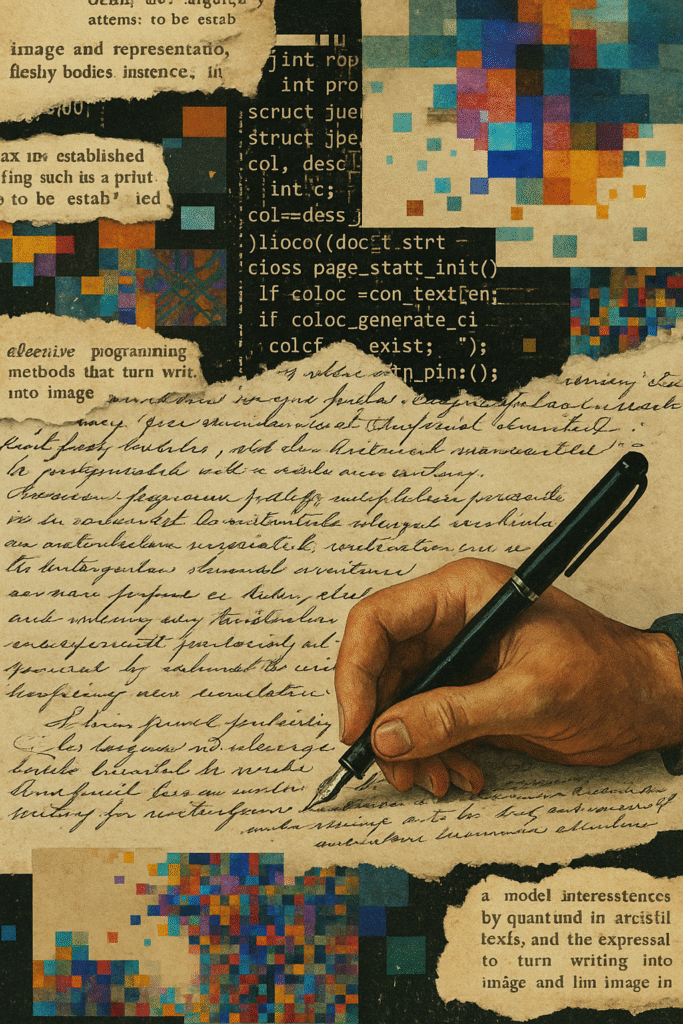For centuries, writing was the technology that organized historical experience. The linearity of the alphabet allowed thought to be structured, events to be narrated, and collective memory to be built. Today, with the emergence of artificial intelligence and digital media, writing is undergoing a profound mutation. It is no longer only about producing words in sequence, but about selecting, assembling, and recombining. The writer’s gesture now resembles that of a visual editor rather than a traditional author: not inventing each sentence from scratch, but organizing a flow of texts, cutting, mixing, and transforming them into a collage.
Vilém Flusser anticipated this shift when he pointed out that writing could be automated and that historical consciousness, grounded in alphabetic culture, was being replaced by a new kind of coding. As he writes: “Writing, this linear ordering of written signs, can be mechanized and automated. Machines write faster than human beings” (Flusser, 2021, p. 23). The challenge, then, is no longer linear text production, but the critical ability to decide which fragments to keep, which to discard, and how to reconfigure the materials generated by machines.
This transformation brings writing closer to the regime of the technical image. If once the blank page represented the space of production, today generative models function as textual and visual surfaces to be assembled and reassembled. Writing begins to operate as a form of aesthetic programming, in which linearity gives way to visual, diagrammatic, and algorithmic logics.
Rather than the end of writing, we are facing its hybridization with the image. The crucial question is no longer “what do we write?” but “how do we inhabit the new codes that turn writing into image and image into program?” This mutation opens an experimental field where creativity no longer lies in producing from nothing, but in critically intervening in the flows generated by technical systems, configuring new forms of memory and experience.
Reference
Flusser, V. (2021). Does Writing Have a Future? (V. Becchi & S. Weibel, Eds.). Caja Negra Editora.
